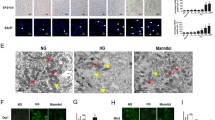Abstract
Background. Senescence marker protein-30 (SMP30), a calcium binding protein, is preferentially expressed in the renal proximal tubules and hepatocytes and is presumed to play a role in Ca2+ homeostasis.
Methods. To explore its physiological functions in the tubular cells, we investigated the effect of SMP30 on Ca2+ efflux via the ATP-dependent plasma membrane calcium pump. LLC-PK1 cells were stably transfected with a cDNA encoding SMP30, and the established transfectants were subjected to ATP responses.
Results. Overexpression of SMP30 significantly increased Ca2+ efflux under both basal and ATP-stimulated conditions. Inhibition of calmodulin by trifluoperazine abrogated the enhanced Ca2+ efflux, suggesting that SMP30 activated the calmodulin-dependent Ca2+ pump. It is known that Ca2+ superfluous influx induces cellular injury. Compared with mock-transfected cells, LLC-PK1 cells expressing SMP30 showed resistance to cellular death triggered by Ca2+ superfluous influx.
Conclusion. These results suggest the possibility that, in renal tubular cells, endogenous SMP30 participates in Ca2+ efflux via activating the calmodulin-dependent Ca2+ pump and thereby confers resistance of the cells against injury caused by high intracellular Ca2+ concentrations.
Similar content being viewed by others
Author information
Authors and Affiliations
Additional information
Received: September 25, 1998 / Accepted: May 6, 1999
About this article
Cite this article
Inoue, H., Fujita, T., Kitamura, T. et al. Senescence marker protein-30 (SMP30) enhances the calcium efflux from renal tubular epithelial cells. Clin Exp Nephrol 3, 261–267 (1999). https://doi.org/10.1007/s101570050045
Issue Date:
DOI: https://doi.org/10.1007/s101570050045




